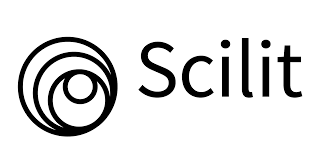INSTAGRAM: INTEGRATED MARKETING COMMUNICATION (IMC) SEBAGAI STRATEGI PENJUALAN BAGI MAKE UP ARTIS (MUA)
DOI:
https://doi.org/10.38043/jids.v4i2.2418Keywords:
Makeup Artist, Instagram, Komunikasi, PemasaranAbstract
Meningkatnya jumlah MUA di Indonesia yang menggunakan Instagram sebagai media promosi, namun nyatanya masih banyak MUA yang tidak mengerti cara pemasaran di Instagram yang mengakibatkan penjualan jasa di bidang make up sepi pelanggan. Kontribusi penelitian ini untuk meningkatkan kewirausahaan melalui sektor jasa di bidang kecantikan. Penelitan ini bertujuan menghasilkan toolkit berupa informasi strategi penggunaan Instagram sebagai media dalam komunikasi pemasaran bagi pekerjaan makeup artist yang diharapkan mampu meningkatkan penjualan jasa di bidang makeup. Menggunakan konsep IMC sebagai integrasi dari kemampuan dasar MUA (offline) dan online di Instagram. Metode penelitian kualitatif dengan pendekatan fenomenologi menggunakan paradigma konstruktivisme, dimana observasi Instagram dilakukan terhadap 20 MUA influencer di Indonesia yang telah ditetapkan kriterianya. Hasil penelitian ini bahwa strategi IMC yang bisa diterapkan pada instagram bagi MUA yaitu: (1) Upgrade skill Makeup; (2) Upgrade produk makeup; (3) Ciptakan engagement dengan audience; (4) Kualitas foto yang bagus; (5) Video sebagai pembuktian kekuatan makeup; (6) Penggunaan softlens mempengaruhi hasil makeup; (7) Kekuatan #Hastags pada Instagram; (8) Waktu dan konsistensi posting
Downloads
References
Aytuğ, Sevtap Müzeyyen. (2015). “Make Up As a Sign of Public Status.” Procedia - Social and Behavioral Sciences 195: 554–63. https://doi.org/10.1016/j.sbspro.2015.06.272.
Casaló, Luis V., Carlos Flavián, and Sergio Ibáñez-Sánchez. (2020). “Be Creative, My Friend! Engaging Users on Instagram by ProJuska, J. M. (n.d.). Integrated Marketing Communication Advertising and Promotion in a Digital World.Moting Positive Emotions.” Journal of Business Research, no. February: 1–10. https://doi.org/10.1016/j.jbusres.2020.02.014.
Chaffey, Dave. 2008. “E-Marketing.” E Marketing, 637–68. https://doi.org/10.4018/978-1- 60960-765-4.ch008.
Damayanti, Damayanti, Suprihatin Ali, and Mediya Destaia. (2018). “ANALISIS STRATEGI E-PROMOTION JASA MAKE-UP ARTIST MELALUI INSTGRAM (Studi Pada Chels Makeup Artist Di Bandar Lampung).” Journal of Applied Business Administration 2 (2): 267–77. https://doi.org/10.30871/jaba.v2i2.933.
Dumas, Tara M., Matthew Maxwell-Smith, Jordan P. Davis, and Paul A. Giulietti. (2017). “Lying or Longing for Likes? Narcissism, Peer Belonging, Loneliness and Normative versus Deceptive like-Seeking on Instagram in Emerging Adulthood.” Computers in Human Behavior 71: 1–10. https://doi.org/10.1016/j.chb.2017.01.037.
Giannoulakis, Stamatios, and Nicolas Tsapatsoulis. (2016). “Evaluating the Descriptive Power of Instagram Hashtags.” Journal of Innovation in Digital Ecosystems 3 (2): 114–29. https://doi.org/10.1016/j.jides.2016.10.001.
Guerrero-Rodríguez, Rafael, Svetlana Stepchenkova, and Andrei Kirilenko. (2020). “Experimental Investigation of the Impact of a Destination Promotional Video with Physiological and Self-Reported Measures.” Tourism Management Perspectives 33 (November 2019): 100625. https://doi.org/10.1016/j.tmp.2019.100625.
Hafidz, Irmasari, Alvin Rahman Kautsar, Tetha Valianta, and Nur Aini Rakhmawati. (2017). “Teenstagram TimeFrame: A Visualization for Instagram Time Dataset from Teen Users (Case Study in Surabaya, Indonesia).” Procedia Computer Science 124: 100–107. https://doi.org/10.1016/j.procs.2017.12.135.
Jin, S. Venus, and Ehri Ryu. (2020). “‘I’ll Buy What She’s #wearing’: The Roles of Envy toward and Parasocial Interaction with Influencers in Instagram Celebrity-Based Brand Endorsement and Social Commerce.” Journal of Retailing and Consumer Services 55 (November 2019): 102121. https://doi.org/10.1016/j.jretconser.2020.102121.
Joshanloo, Mohsen, and Aaron Jarden. (2016). “Individualism as the Moderator of the Relationship between Hedonism and Happiness: A Study in 19 Nations.” Personality and Individual Differences 94: 149–52. https://doi.org/10.1016/j.paid.2016.01.025.
Juska, Jerome M. (2017). Integrated Marketing Communication Advertising and Promotion in a Digital World. London, United Kingdom: Taylor & Francis Ltd.
Key, Thomas Martin, and Andrew J. Czaplewski. (2017). “Upstream Social Marketing Strategy: An Integrated Marketing Communications Approach.” Business Horizons 60 (3): 325–33. https://doi.org/10.1016/j.bushor.2017.01.006.
Khan, Asad, Muhammad Ahmad, Yudong Guo, and Ligang Liu. (2018). “Digital Makeup from Internet Images.” Optik 158: 590–601. https://doi.org/10.1016/j.ijleo.2017.12.047.
Latiff, Zulkifli Abd, and Nur Ayuni Safira Safiee. (2015). “New Business Set Up for Branding Strategies on Social Media - Instagram.” Procedia Computer Science 72: 13–23. https://doi.org/10.1016/j.procs.2015.12.100.
Mafra, Anthonieta Looman, Marco Antonio Correa Varella, Renata Pereira Defelipe, Natália Machado Anchieta, Caroline Aparecida Grecco de Almeida, and Jaroslava Varella Valentova. (2020). “Makeup Usage in Women as a Tactic to Attract Mates and Compete with Rivals.” Personality and Individual Differences 163 (December 2019): 110042. https://doi.org/10.1016/j.paid.2020.110042.
McCain, Jessica L., Zachary G. Borg, Ariel H. Rothenberg, Kristina M. Churillo, Paul Weiler, and W. Keith Campbell. (2016). “Personality and Selfies: Narcissism and the Dark Triad.” Computers in Human Behavior 64: 126–33. https://doi.org/10.1016/j.chb.2016.06.050.
Mittal, Vatsala, Aastha Kaul, Santoshi Sen Gupta, and Anuja Arora. (2017). “Multivariate Features Based Instagram Post Analysis to Enrich User Experience.” Procedia Computer Science 122: 138–45. https://doi.org/10.1016/j.procs.2017.11.352.
Nedra, Bahri Ammari, Walid Hadhri, and Mariem Mezrani. (2019). “Determinants of Customers’ Intentions to Use Hedonic Networks: The Case of Instagram.” Journal of Retailing and Consumer Services 46 (July 2018): 21–32. https://doi.org/10.1016/j.jretconser.2018.09.001.
Porcu, Lucia, Salvador del Barrio-García, Philip J. Kitchen, and Marwa Tourky. (2019). “The Antecedent Role of a Collaborative vs. a Controlling Corporate Culture on Firm-Wide Integrated Marketing Communication and Brand Performance.” Journal of Business Research, no. October 2018: 0–1. https://doi.org/10.1016/j.jbusres.2019.10.049.
Póvoa, Angela Cristiane Santos, Wesley Pech, Juan José Camou Viacava, and Marcos Tadeu Schwartz. (2020). “Is the Beauty Premium Accessible to All? An Experimental Analysis.” Journal of Economic Psychology 78: 102252. https://doi.org/10.1016/j.joep.2020.102252.
Rietveld, Robert, Willemijn van Dolen, Masoud Mazloom, and Marcel Worring. (2020). “What You Feel, Is What You Like Influence of Message Appeals on Customer Engagement on Instagram.” Journal of Interactive Marketing 49: 20–53. https://doi.org/10.1016/j.intmar.2019.06.003.
Yu, Chung En, Selina Yuqing Xie, and Jun Wen. (2020). “Coloring the Destination: The Role of Color Psychology on Instagram.” Tourism Management 80 (February): 104110. https://doi.org/10.1016/j.tourman.2020.104110.
Zhang, Sha, Koen Pauwels, and Chenming Peng. (2019). “ScienceDirect The Impact of Adding Online-to-Offl Ine Service Platform Channels on Firms ’ Offline and Total Sales and Profits.” Journal of Interactive Marketing 47: 115–28. https://doi.org/10.1016/j.intmar.2019.03.001.


















